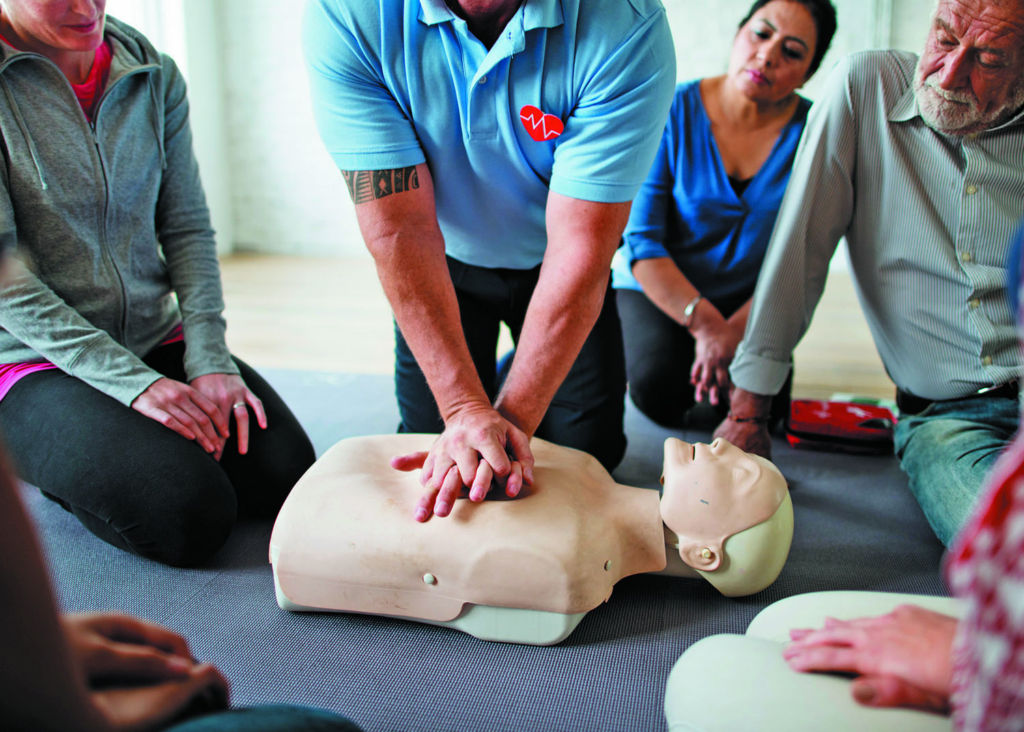You will notice that there are a lot of people who will suggest you learn CPR or will even instruct you that this is the best thing that you can do.
However, is it that easy? Most people need help understanding this, but it is challenging to give proper CPR if you do not know about it.
CPR refers to Cardiopulmonary Resuscitation and is a highly effective process that helps if a person suddenly stops breathing. You might need to give sudden CPR if there is a heart attack or the individual is drowning.
Usually, when it comes to CPR, a few steps are included. Apart from pumping the chest, you might also need to give mouth-to-mouth breathing. What does it do?
The most common implication of the CPR process is that it will keep the blood flowing to your brain and other organs.
If the brain or the heart does not get blood, it can kill the person in a second. Ensuring that the blood circulates to the organs is very important unless the medical professionals arrive, so the patient does not collapse.
Step By Step Guide To An Effective CPR

When it comes to providing effective CPR, you can follow the steps that we have chalked out. These are:
Step 1:
The first thing you need to do is check the patient’s pulse rate, and if you see that it does not have any response, it is best to give CPR, irrespective of whether you are trained or not.
In this case, you must first place your left hand under your right hand and provide recurrent pumps to the chest. It should be between 100 to 120 pumps per minute, keeping the blood flow under check.
Step 2:
If you notice no changes even after the pumps, this is ideally the right time to give mouth-to-mouth breathing.
For this, you need to open the mouth and then place your mouth and blowing oxygen to the patient. Give it in recurrent phases so the individual can get a constant oxygen supply.
Sometimes the patient cannot take oxygen alone, which is when the mouth-to-mouth breathing technique works wonders.
Step 3:
Always remember that you need to remember the acronym CAB for effective CPR. It refers to compression, airway, and breathing. For any CPR, you first must compress the heart consistently and ensure it will respond to the reduction.
The next thing that you need to do is clear your breath. Clearing the pathway for oxygenation is very important, and it will ensure the blood circulation level is alright. And finally, you need to give a mark to mouth breathing to help the patient start breathing again.
Step 4:
Ensuring you are in the correct position is extremely important when giving CPR. It will enhance the effectiveness rate of your CPR.
It would help if you made the patient lie down on their back and clear the environment around them. Next, you must sit beside them on your knees and then position your hands on the patient’s chest.
It would be best to keep your elbows straight; the hands should be right between the patient’s nipples.
Not only that, we always suggest that you put the entire weight of your body on while giving compressions.
Ideally, you will see that all of the professional medical associations will ask you to maintain a compression rate of 100 to 120 per minute. You will also need to give CPR unless there is any movement in the body.
Can An Untrained Individual Give CPR?

It is true that when it comes to professionals, they are the best trained to give CPR, and these are always accurate as well.
However, as an unsecured individual, you might need to provide emergency CPR and being prepared for it is crucial.
Giving CPR is not difficult, and you only need to understand the body position and what to do with your hands. Working fast and effectively is the need of the hour.
If you want to learn CPR, you can follow this guide on online CPR courses. The good thing about this guide is that it will help you start providing perfect CPR and help with emergency rescue.
Conclusion
CPR can be highly effective, and you might need to provide CPR at any time. Even if you belong to any other profession, learning the basics of quick CPR could be extremely helpful.
Most medical professionals will agree that CPR is like the preliminary form of first aid you can give if the heart suddenly fails to pump. Keeping the blood flow intact and ensuring oxygen reaches different body parts, specifically the brain.
Meta: At times, even as untrained professionals, we must give CPR to prevent an emergency from worsening. Under such cases, how to give CPR? Follow this stepwise procedure for the same.

Jean Smith is a fitness enthusiast and blogger who focuses on fitness and a healthy lifestyle. She is passionate about assisting people in living healthier lifestyles and is constantly on the lookout for new and creative methods to stay fit and healthy. Her articles are excellent resources for anyone interested in improving their health and fitness.
